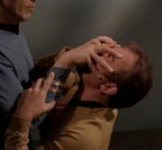Beware_of_Dawg said:I carried that over as well. Do you know where that analogy originated? It's amazing how many things carry over.
Along this line of thinking....
Instructors, would you agree that this is sound advice in regard to grip?
The single most important aspect of grip pressure is that it stays the same throughout the stroke. One of the biggest destroyers of the stroke is an increase in grip pressure at the start of the downswing. When this happens it is virtually impossible to stroke the tip on the correct path. If anything the grip pressure should lighten slightly on the downswing to help us fully release the stroke.
Here is a simple drill to help you stop choking the cue on the downswing. During your practice sessions check your grip pressure when you are addressing the cue ball and check it again when you are holding your finish position. It should be the same at the finish as it was during address. If it is not you have some work to do. The more often you check on yourself, the sooner your brain will get the message you want the pressure to stay the same.
If we were to rate grip pressure on a scale of one to ten (with ten being a death grip and one being just barely enough pressure to keep the cue from falling out of our hands) the ideal grip pressure is between 3 and 5. The lighter the better. We need speed to propel the cueball long distances NOT FORCE. Swinging a cue is similar to throwing a ball, the muscles of the hand and arm should be loose and whippy. The tighter we hold on the SLOWER the cue will be moving when it gets to the ball.
